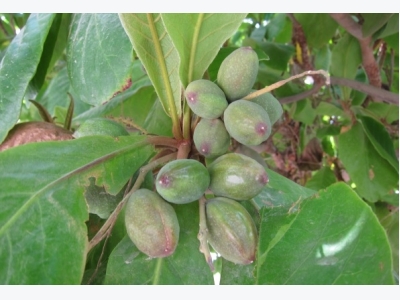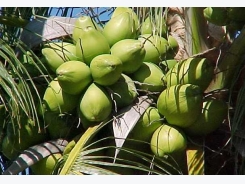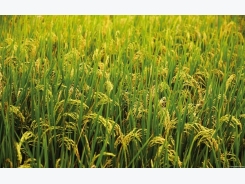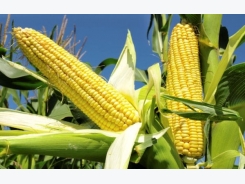Almond Cultivation Information Guide

Introduction of Almond Cultivation:- Almond is a very famous and energy provider dry fruit which is mostly cultivated in Middle east and South Asia. The almond is a species of tree native to the South Asia & Middle Eastern regions. Almond belongs to the family of “Rosaceae” and genus of “Prunus”. Usually, the almond tree is a deciduous and reaches up to 10 meters in height, with a trunk of up to 30 to 35 cm in diameter. The almond fruit is a actually a drupe not a nut botanically, consisting of an outer hull and a hard shell with the seed inside. Generally almonds are sold shelled or unshelled. Almonds can also be used in cooking and also to produce oil. Commercial cultivation of almonds is very much successful in Asian countries due to their nutrition values and health benefits and local market as well as export value. Almond milk, almond flour, almond syrup, almond oil is some of the alternate uses of almonds. With perfect improved variety and farm management practices, one can expect decent profits in commercial farming of almonds. Almonds can be grown in backyard or even in pots or containers.

Almond Flowering
Health Benefits of Almond:- The following are some of the health benefits of almonds. health benefits of almonds

- Almonds are a source of many vitamins and minerals.
- Almonds are good for bone health.
- Almonds help in regulating cholesterol.
- Almonds are good for heart health.
- Almonds boost immune power.
- Almonds are good for skin.
- Almonds have Anti-Inflammatory properties.
- Almonds help in regulating blood pressure.
- Almonds boost energy.
- Almonds help in preventing colon cancer.
- Almonds help in protecting from diabetic situations.
- Almonds help in relieving from constipation.
- Almonds help in weight loss program.

Almond Nutrition Facts
Major Almond Production Countries:- Almonds are produced throughout the world. However, here is the list of top 10 almond production countries in the world.
- United States.
- Spain.
- Iron.
- Morocco
- Italy.
- Syria.
- Tunisia.
- Turkey.
- Algeria.
- China.
Varieties of Almond:- Different types of almonds can be distinguished according to their taste and uses. Two types of almonds can be distinguished, those with soft shell, mainly produced in California, and those with hard shell, like the Spanish varieties Marcona and Desmayo or many of the produced in Portugal. In Asia region, Indian Almonds are one of the famous varieties.
There are many improved varieties available in different local regions. Select high yielding hybrid variety of almond as part of seed selection while going for large scale commercial production.
- Main variety: Non-pareil which comprises 50 to 60 % of global yields.
- Hard shell varieties: Texas, Buttei.
- Soft shell varieties: Rudy,Thompson, Carmel.
- Regular shell varieties: California Mission Neplus, Hanatziv, Um-el-Fahem, Be’eri,Greek, Marcona.
There are sweet almond and bitter almond varieties as well.
Local Names of Almond in other Parts of World:- Bian tao (Chinese), biteo amondeu (Korean), Hode badam (Nepali), Aelmon (Thai), cay hạnh nhan (Vietnamese), Бодом (Uzbek), 㤠ម៉ង់ (Cambodian),Gor’kij mindal (Russian), Badem (Turkish),pokok badam (Malay), Badam (Hindi, India), Миґдаль (Ukrainian), 杏仁 (Taiwanese), badam (Persian), āmondo (Japanese), Lawzah (Arabic), Badem (Bosnian).
Local Names of Almond in India:- Badam pappu (Telugu), Badam Parappu, பாதாம் பப் (Tamil),Badam,बदाम (Konkani), badam (Oriya), Badam,बादाम (Hindi), Badam (Assamese),Badam,बादाम (Marathi), Kaṭabadam (Gujarati), ബദാം,Badam kayu (Malayalam)
Agro-climatic Requirements for Almond Cultivation:- Almonds can be grown above 8,00 to 3,500 meter above mean sea level (m.s.l). Almond grows best in Mediterranean climates with warm, dry summers and mild, wet winters. The optimal temperature for their growth is between 15°C and 32 °C and the tree buds have a chilling requirement of 250 to 600 hours below 7.2 °C to break dormancy. Almond plants are very sensitive to cool and frost conditions, hence areas with heavy frost conditions are not suitable for almond cultivation.

Growing Almonds in Pots
Soil Requirements for Almond Cultivation:- Almonds grow in all types of soils. However, deep, welldrained, loamy soils are best for their optimum growth. One should avoid soils which have water-logged conditions and high water table soils. The required soil optimal pH is 7.0 to 8.5 for quality nuts and high production.
Propagation in Almond Cultivation:- Almonds can be propagated vegetatively or through seeds. For propagation, current season’s sweet or bitter nuts should be procured and which can be sown directly in well prepared beds. At the time of sowing, nuts should be stratified for better germination. Peach can be used as rootstock during initial 10 to 12 years of almond cultivation. However, due to shorter life span of the rootstock, the almond plants raised on this rootstock do not last longer. Almond seedlings of pencil thickness should be budded 10 to 12 cm above the ground level by shield budding method.

Almond Farming
Land Preparation, Planting in Almond Cultivation:- Land should be ploughed couple of times and levelled. Any unwanted weeds from previous crops in the field should be removed. Supplement appropriate organic matter in the filed in last ploughing. A square or hexagonal system should be adapted in case of vegetative propagation at spacing of 5.5 m – 7.5 m depending on the soil type, vigour of scion and irrigation availability, Make sure to plant pollinizer variety in every 3 rd row. The blooming time of pollinizers should coincide with the blooming time of main varieties. For effective pollination, 5 to 10 bee hives should be placed in the field at the time flowering.
Pruning and Training in Almond Cultivation:- Intercultural operation like pruning and training should be carried out for proper establishment of orchard. Almond plants should be headed back 1 meter above the ground level at the time of planting. The first branch of plant should be allowed not below 0.7 meter from the ground level. Adopt central modified leader system by retaining 3 to 4 scaffold branches which produce well balanced trees. Strong scaffold limbs can be obtained by maintaining 45-60 crotch angles. In case of weal crotches, branches need to be tied with a string thread. Pruning should be carried out in such a way that new spur growth should constantly replace spurs that are no longer useful. Water sprouts which are un-wanted and suckers should be removed.
Irrigation in Almond Cultivation:- Irrigation depends on the soil type and climatic conditions. Irrigation should be provided whenever there is a water stress. For better utilization of water, drip irrigation can be adopted in almond cultivation. Make sure to drain out any excess water in case of floods or heavy rains. Almonds plants are very sensitive to water-stagnation.
In case of using drip irrigation:
- Older plants with traditional spacing of two laterals/row should be accommodated.
- Young plantation of 1 to 2 laterals/ row depending on the soil type should be used.
- Recommended distance between drippers: 0.5 meters.
- water discharge rate: 1.6-2.5 liter/hour
- Frequency of irrigation: Every 2 to3 days, according to soil type and plants age and climate.
Manures and Fertilizers in Almond Cultivation:- During land preparation, 400 to 500 kg of well decomposed farm yard manure should be incorporated into the soil. To find out actual nutrient requirement in the soil, soil test needs to be carried out. Almond plants are heavy feeders and to get maximum yield, proper fertilization should be applied during its entire growth period. The Nitrogen ‘N’ should be applied in split doses (approximately: 2 to 3 doses). Initial half dose should be applied along with ‘p’ and ‘K’ before almond plants starts blooming. The second dose (1/4th of total quantity) should be applied after three weeks after fruit set and third dose (1/4th of total quantity) should be applied in June or July.
Pests and Diseases in Almond Cultivation:- The following are the common pests and diseases found in almond farming.
- Pests: Brachycaudus amygdaliana, capnodis tenebonis, cerambyx dux, eccoptogster amygdaly, eurytoma amygdaly, lymantria destituta, lyonetia lerkella, meloidogyne spp, mites, navel orange worm, twig borer are the main pests found in almond cultivation.
- Diseases: Agrobacterium tumefaciens, brown rot, cercospora circumscissa, deplodea sp., nematodes, oak rot, polystigma ochraceum, pytophthora, rust on stone fruit, silver leaf, verticilium spp are the main diseases found in almond cultivation.
To control these pests and diseases in almond plantation, contact nearest horticulture department or any agriculture universities.
- Frost: Due to early budding of almond plants, particularly blossoms, almond trees could easily be harmed by early frost or even by a late seasonal frost. In this case, it is advised that a frost protection system to be installed. The recommended system is the use of Super-net micro-sprinklers for every tree. Irrigation rate 3.5 mm/hour.
Harvesting In Almond Cultivation:- Almonds would be ready when they change the colour from green to yellow with cracks on them or when splitting starts (After the outer shell of all the fruit has opened). Tree shaking is acceptable as part of harvesting. Collected almonds should be allowed to dry in shade for some time.
Yield in Almond Cultivation:- Yield of almond crop depends on the soil type, irrigation facility, fertigation provided, farm management methods and other practices. Generally on an average 1 to 2 tonnes/ha can be obtained.
Bottom Line of Almond Cultivation:- There is a good chance of decent profits in Almond Cultivation with proper management practices followed.
Related news
Tools

Phối trộn thức ăn chăn nuôi

Pha dung dịch thủy canh

Định mức cho tôm ăn

Phối trộn phân bón NPK

Xác định tỷ lệ tôm sống

Chuyển đổi đơn vị phân bón

Xác định công suất sục khí

Chuyển đổi đơn vị tôm

Tính diện tích nhà kính

Tính thể tích ao




 Peanut Farming (Groundnut) Information Guide
Peanut Farming (Groundnut) Information Guide  Maize Cultivation Information Guide
Maize Cultivation Information Guide